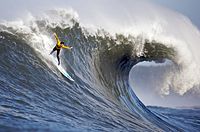
Cargando...
What can I do?
226261 materialEducativo
textoFiltroFichaAbout this resource...
Océano es un chico surfero al que le gusta la geografía, así sabe cuál es el mar que tiene las olas más grandes para poder disfrutarlas durante todo el año. Le encanta la fauna y la flora marinas y ponerse moreno pero siempre protegiéndose con crema solar para no quemarse.
Si la geografía también es lo tuyo, visita los mapas para jugar a aprender de Didactalia y surfea por los mares y océanos e incluso por los ríos de todos los continentes.

Exclusive content for members of

Mira un ejemplo de lo que te pierdes
Autores:
Categories:
Tags:
Add to Didactalia Arrastra el botón a la barra de marcadores del navegador y comparte tus contenidos preferidos. Más info...
Comment
1